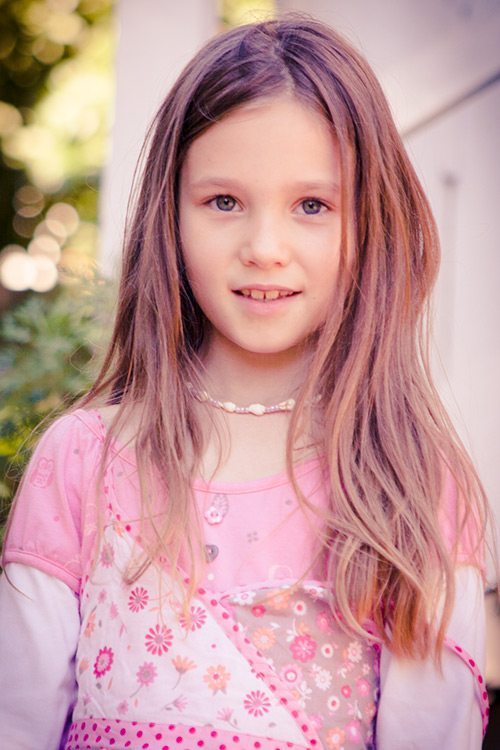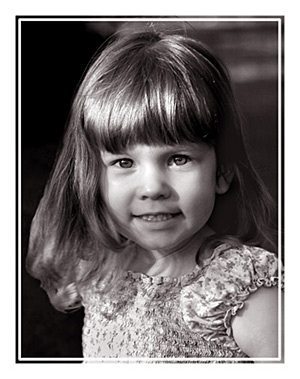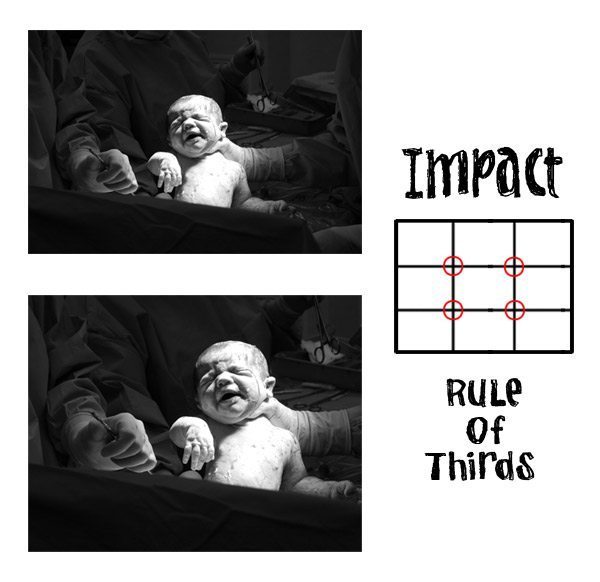Photographic Composition can have a dramatic effect on the impact of your photographs. There are several easy techniques which you can use help improve your photography.
Distracting Backgrounds
Distracting Backgrounds can spoil an otherwise great photo. For instance, a brightly coloured object behind the subject, say a child, can draw your eye away from the subject. I took a snap of my daughter when she was 2 while she was playing in the backyard. The background was the plain green of the grass apart from one distracting element, a bright red swing in the background. The bright colour drew your eye away from the main subject. It was such a nice natural candid shot it was a shame to have it spoilt by the swing in the background.
Wherever possible it is best to keep an eye out for such distracting elements when taking your image and change your position or recompose. However this is not always possible and in this case I was able to remove the swing with the help of the clone tool in Photoshop.
Fill the Frame
Another way to avoid distracting backgrounds and maximise photo impact is to fill the frame with your image. Because the frame is filled with the subject it draws and holds your eye on the subject. Simplifying the photo further by converting to black and white can also dramatically improve an image, or simply give a different feel or mood.
Depth of field
Depth of field can also help with distracting background elements. Using a narrow depth of field works to keep the field of focus on the subject and details in the background are blurred out. In the case of using long lenses, you might also get bokeh effects which are commonly a pleasing (and currently popular) effect created by the shape of the shutter and sometimes becomes apparent with narrow depth of field and highlights in the background of an image. If bokeh highlights are too bright however, they too can be distracting. You can avoid bokeh effects by using shorter lenses.

Rule of Thirds
It is not always best to fill the frame as sometimes you need to show more to tell the story. Sometimes positioning the subject in a certain way can add tension to the image. A common technique is to use the ‘rule of thirds’. When using this technique you mentally divide the frame into thirds by way of horizontal and vertical (mental) lines. The points at which these lines cross are the best points to position the subject to take advantage of maximum ‘tension’ and compositional ‘correctness’ emphasise the feel or mood.
It can be very tempting to place a subject in the centre of the image. Using the rule of thirds makes an image more interesting to look at and increases tension and balance. Below is a photo of my son being born with him positioned in the centre of the frame. Also shown is the same image cropped using the rule of thirds to add interest to the composition. This format makes the image more interesting to look at and adds tension. Take a look and decide for yourself.
© Clikchic Designs 2006, All rights reservedSubscribe to the Clikchic Designs Newsletter and get a FREEBIE! There are ongoing freebies as well. Don't worry, we won't inundate you with emails.




